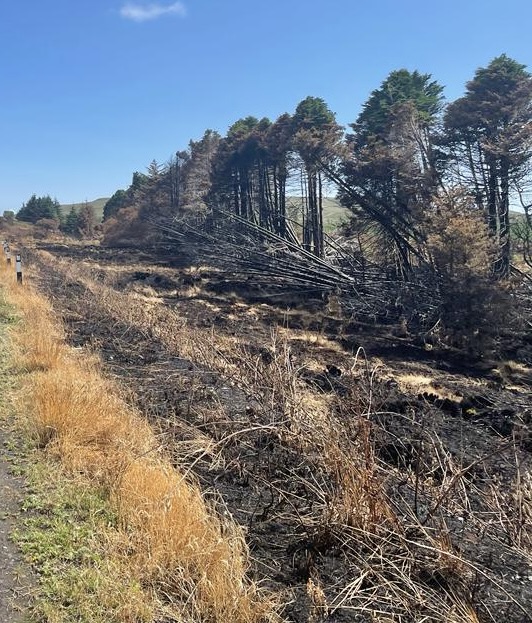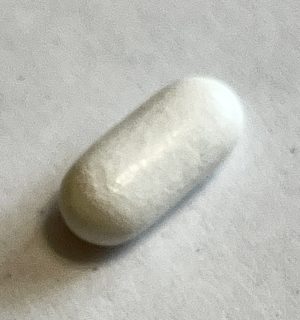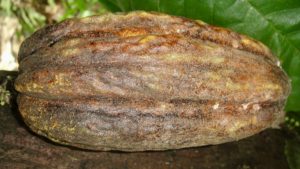New uses for ‘waste’ plant material.

Many trees emit a scent or fragrance. They form volatile organic compounds (VOC’s), often oils. Pine trees, for example, release pinenes. Such VOC’s contribute to the smell that you may experience as you walk through a woodland. The VOCs contribute to the formation of aerosols. An aerosol is a ‘mixture’ of very small particles (solid or liquid) in air; other examples of aerosols include mist, cigarette smoke, or even car exhaust fumes!
Recent research by the University of East Finland has showed that aerosols formed from VOCs can reduce the amount of solar radiation that reaches the earth’ surface, by scattering some of the radiation back into space.

Felling in progress
Pine trees are often grown in vast numbers and periodically felled for timber and paper making. One by-product of paper-making (by the Kraft process) is turpentine - formed by the condensation and collection of the volatile oils in the wood). The pinenes (α and β) are major constituents of turpentine. ‘Turps’ is used as a solvent to thin oil-based paints, for producing varnishes and as a ‘raw material’ in the chemical industry. α-Pinene was used to make toxaphene (an insecticide, now banned). Pinene can also treated with acetic acid to make a perfume with a pine needle smell.
 Recently a team of scientists at the University of Bath have found a new use for the by-products of paper production. Using pinene from turpentine, they have been able to make a number of pharmaceutical compounds that can then be made into the painkillers - paracetamol and ibuprofen. They have also successfully made other chemicals from the plant based turpentine, including compounds that may be used to synthesise `beta-blockers (heart tablets) and salbutamol (used for asthma). At present, many pharmaceuticals and other chemicals are ultimately derived from crude oil. Hopefully, this research will ultimately lead to a more sustainable and ‘green’ approach to drug / pharmaceutical manufacture.
Recently a team of scientists at the University of Bath have found a new use for the by-products of paper production. Using pinene from turpentine, they have been able to make a number of pharmaceutical compounds that can then be made into the painkillers - paracetamol and ibuprofen. They have also successfully made other chemicals from the plant based turpentine, including compounds that may be used to synthesise `beta-blockers (heart tablets) and salbutamol (used for asthma). At present, many pharmaceuticals and other chemicals are ultimately derived from crude oil. Hopefully, this research will ultimately lead to a more sustainable and ‘green’ approach to drug / pharmaceutical manufacture.
Biochar is the black residue, consisting of carbon and ashes that remain when plant biomass is subject to pyrolysis - that is, very high temperatures with very little or no oxygen present oxygen. The material that remains is largely elemental carbon. The benefits of converting plant biomass into biochar is that the carbon is ‘locked up’, rather than being released by decay and decomposition into the atmosphere as carbon dioxide. Its advocates claim that when added to soil, it improves soil structure and function, as well as being a form of carbon sequestration..

cocoa fruit
Various forms of biomass (woody debris, corn stalks) have been used to produce biochar, however, a novel method makes use of ‘discarded’ cocoa bean shells. These are heated to a temperature in excess of 600oC, with no oxygen present. This particular form of biochar is being produced in in Hamburg. The plant, which is one of the largest in Europe, receives a supply of used cocoa shells viably a network of grey pipes from a neighbouring chocolate factory. Apart from its use as a fertiliser, it is possible that it might be used as an ingredient to create a ‘green’ (or more environmentally friendly) form of concrete.
The sequestration of carbon is vital if we are to avoid the worst effects of climate change. Global warming has triggered an increase in heatwaves, floods, droughts, and forest fires in recent years; June temperature data confirms it was the planet's hottest on record.
Cocoa fruit : courtesy of Pixabay.
Comments are closed for this post.
